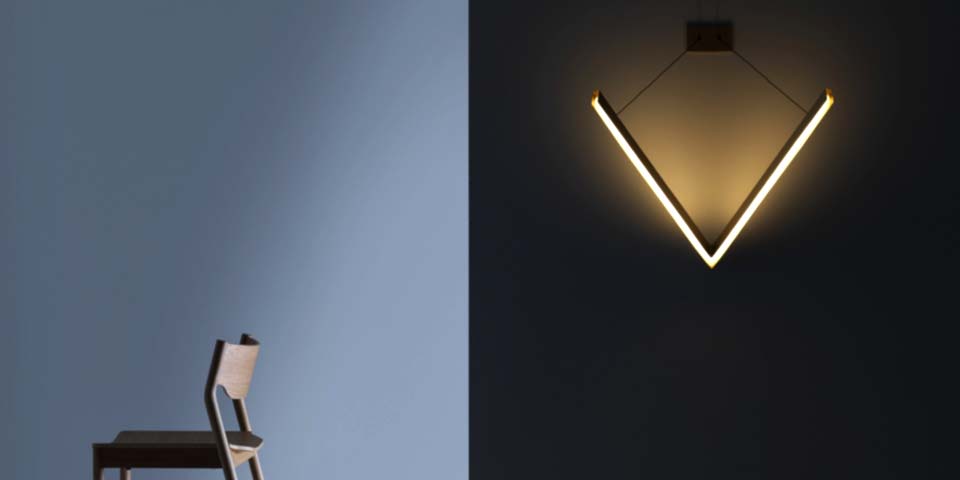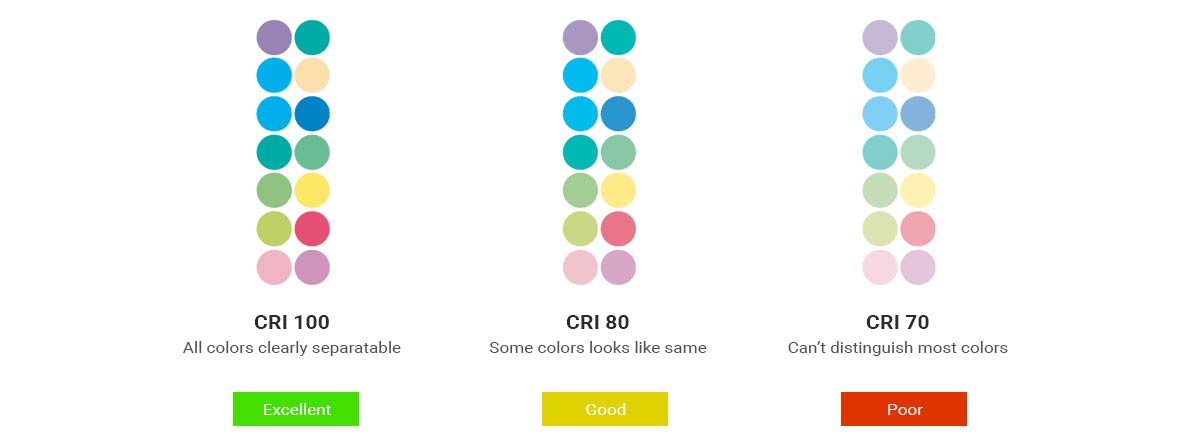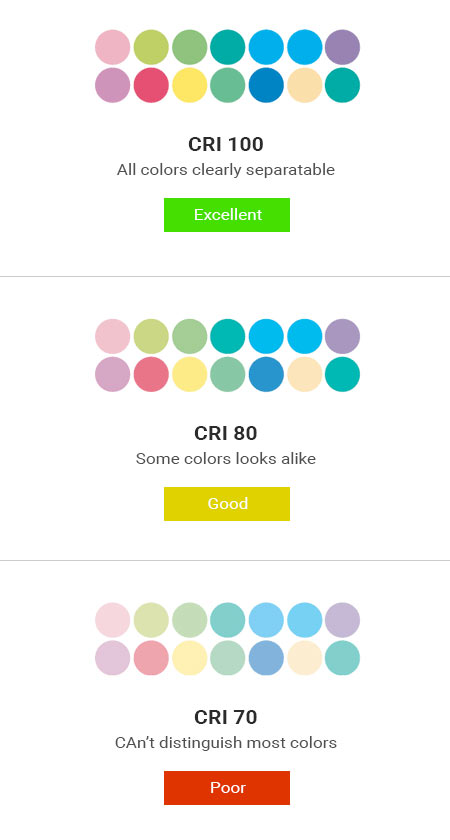- Showroom
- Design Services
- Support Center
- |(866) 954-4489
-
0
Your CartOrder Subtotal0.00
- 0
How to
Measure Light
The basics behind the bulb.
Light Reading
To understand what lighting is best for our wellness, we must first understand the different elements of light itself, and how we measure them. From the bulb to your brain, there are many factors that contribute to how we perceive light. For Human-Centric Lighting (HCL), the most important measurements are: Color Temperature (Kelvin), Lumens (per Watt) and Color Rendering Index (CRI).
Color Temperature
An important characteristic of visible light, color temperature is measured in Kelvin and helps describe how warm (red / amber) or cool (blue / white) a light source will be. The lower the color temperature, the warmer the tone. The higher the color temperature, the cooler the tone. The color temperature scale dates back to the 1800s, discovered and invented by physicist William Kelvin. After heating up blocks of carbon, Kelvin noted the color change from red and orange (lower temperature) to white and blue (higher temperature), thus forming the base for the Kelvin Color Temperature Scale as we know it today. When measuring color temperature, we are actually measuring the temperature of an ideal black-body radiator.


- Similar to: Spotlight
- Recommended for: Atrium, Security
- Emotion: Alert
- Technology: Static White

- Similar to: Daylight
- Recommended for: Retail, Office, Gym
- Emotion: Focused
- Technology: Static White

- Similar to: Fluorescent White
- Recommended for: Retail, Office, Gym
- Emotion: Vibrant
- Technology: Tunable White

- Similar to: Halogen
- Recommended for: Home, Gallery
- Emotion: Relaxed
- Technology: Warm Dim, Tunable White

- Similar to: Incandescent / Edison Bulb
- Recommended for: Home, Restaurant
- Emotion: Serene
- Technology: Warm Dim, Tunable White

- Similar to: Sunrise / Sunset
- Recommended for: Home, Restaurant
- Emotion: Cozy
- Technology: Tunable White

- Similar to: Candle Light
- Recommended for: Spa, Theater
- Emotion: Tranquil
- Technology: Tunable White

Lumens
Perceived as brightness, lumens measure the total quantity of visible light emitted by a source. When a light is attached to a dimmer, you’re adjusting the lumen output. Higher lumens result in brighter light, lower lumens result in dimmer light.
- Lumens
- 2600 lm
- 1600 lm
- 1100 lm
- 800 lm
- 450 lm
- Incandescent Wattage
- 150 W
- 100 W
- 75 W
- 60 W
- 40 W
- LED Wattage
- 25-28 W
- 16-28 W
- 9-13 W
- 8-12 W
- 6-9 W
Color Rendering Index (CRI)
You may notice that some lights make color pop, while others tone it down. This is due to a light sources ability to accurately reveal colors in comparison to an ideal or natural light source -- measured in various spectrums and communicated via the Color Rendering Index (CRI). If a light source has a high CRI, it brings out super saturated colors. If a light source has a low CRI, it may dull or dampen an objects true colors.









